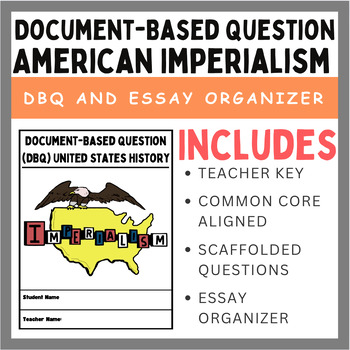American Imperialism DBQ and DBQ Essay Organizer
- Zip
What educators are saying
Also included in
- This is bundle is a great supplement to your unit on American Imperialism! This product includes a graphic organizer that provides students with an overview of American Imperialism during the late 19th and early 20th century. It also includes a video guide for "America Becomes a World Power." This vPrice $4.00Original Price $5.00Save $1.00
Description
DBQs are an excellent way to hit most of the Common Core standards in your class. If there is one activity that encapsulates the requirements of the Common Core - the DBQ is it!
Prompt: What were the motives for American Imperialism and what problem(s) arose with these newly acquired territories?
Here is a list of the documents:
1. Sea Power, Alfred T. Mahan (1890)
2. Encyclopedia Britannia, Excerpt about Open Door Notes
3. Rudyard Kipling, The White Man's Burden (1899)
4. Emilio Aguinaldo, Central Filipino Committee, LETTER TO THE AMERICAN PEOPLE, (1899).
5. Article VII of the Platt Amendment of 1903.
6. February 1901, "To the Person Sitting in Darkness," by Mark Twain
This product comes with a DBQ Essay Organizer and Essay Rubric.
Thumbnail clipart credit: by Dandy Doodles






